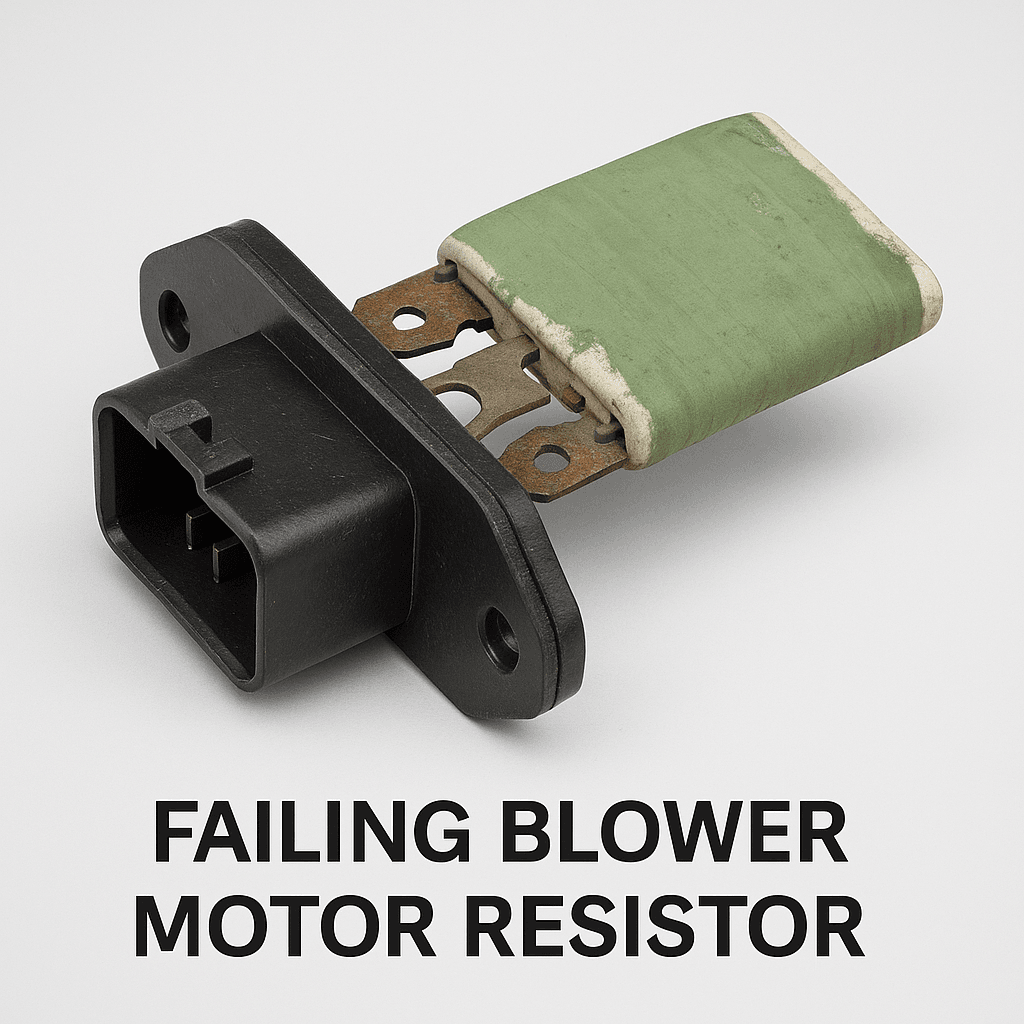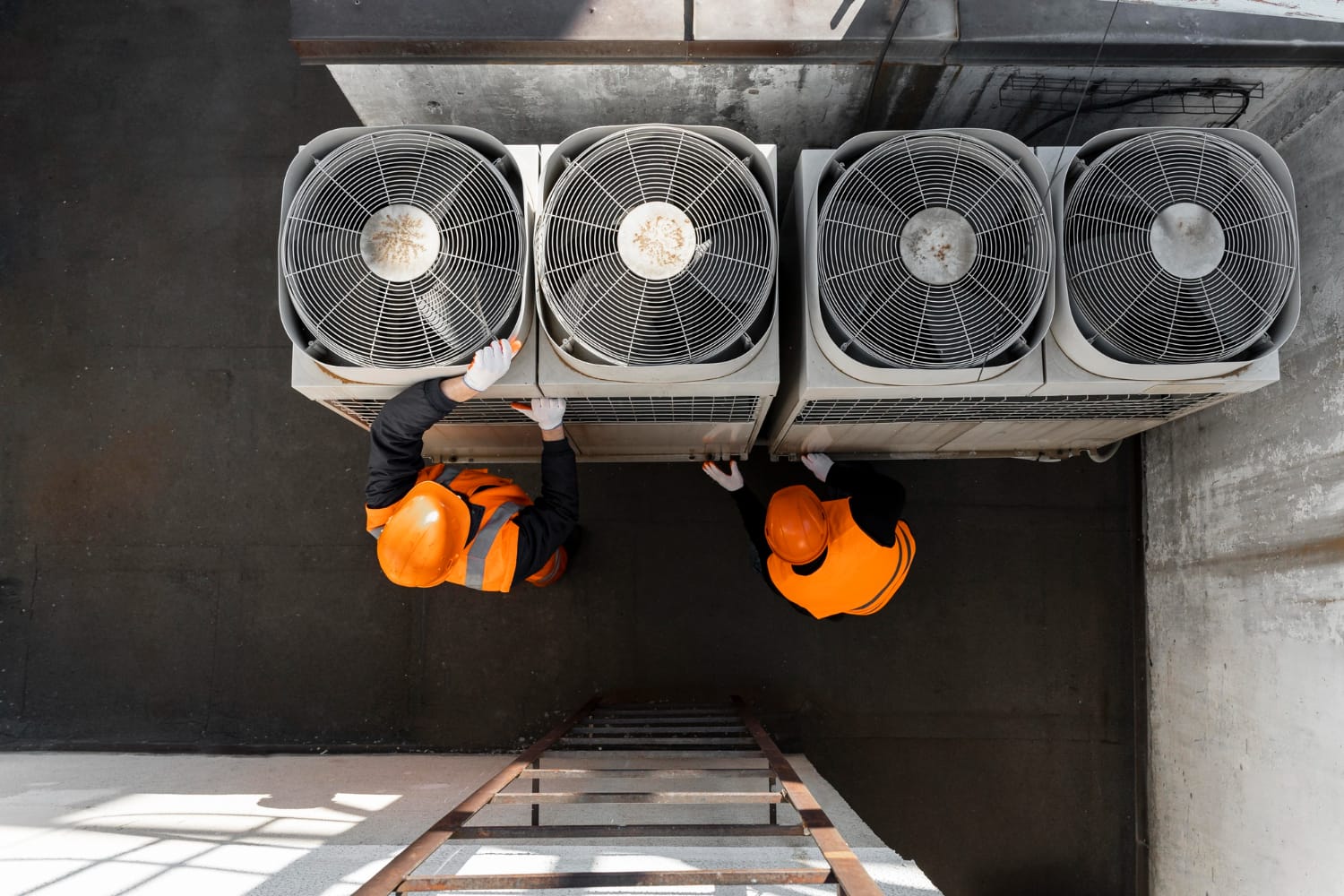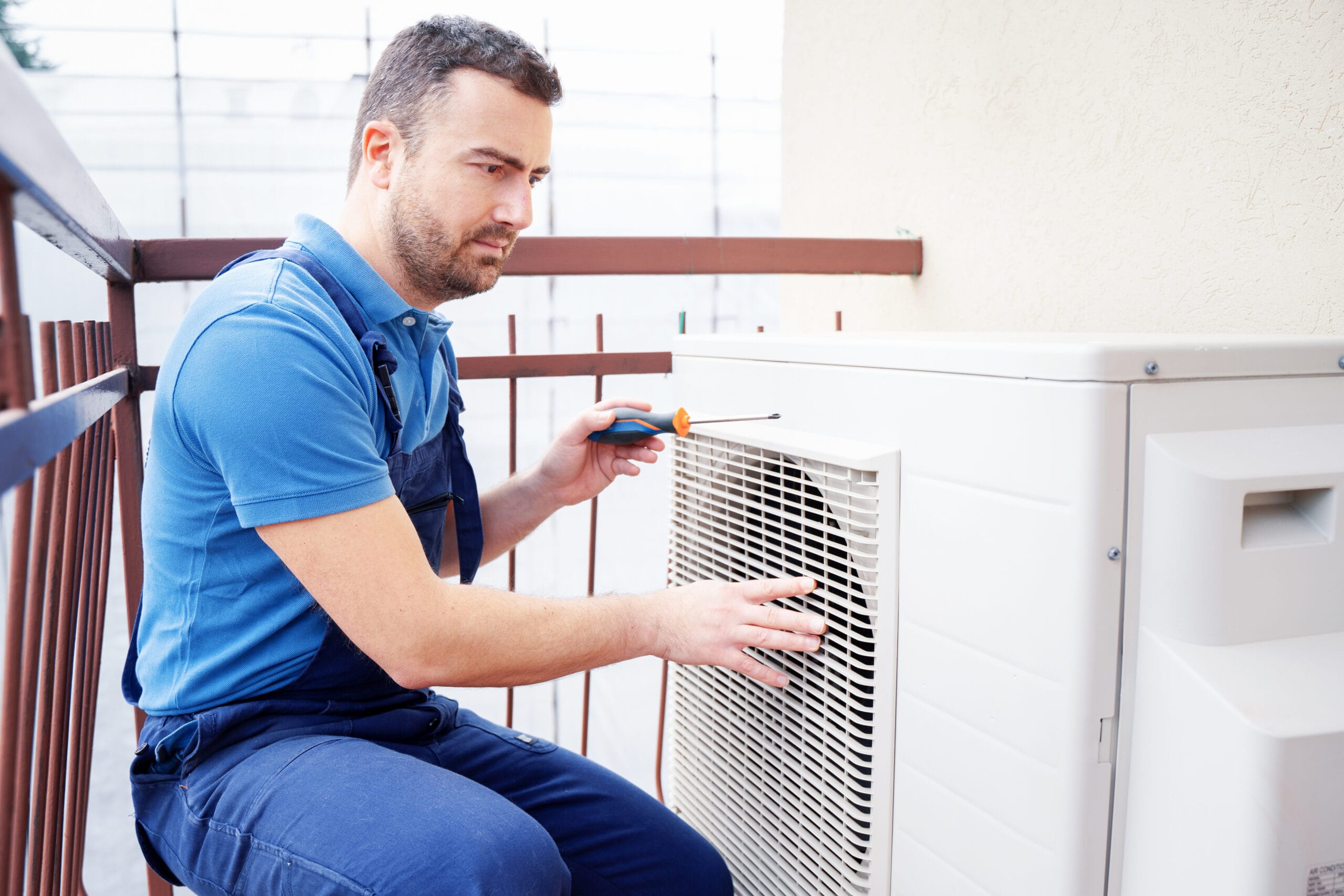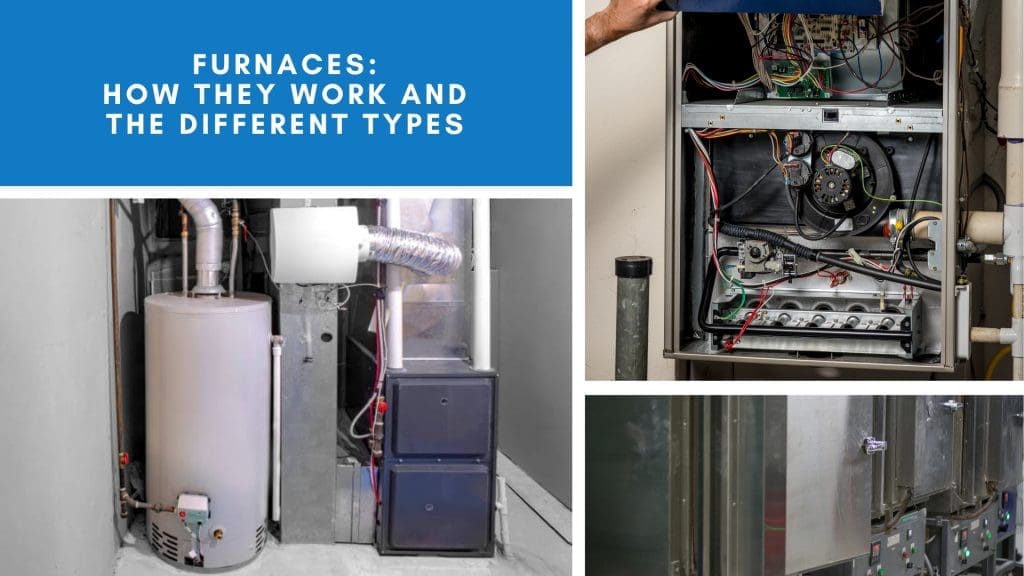Cuando se trata de mantener un ambiente cómodo en su hogar u oficina, su Climatización El sistema juega un papel crucial. Un componente clave de este sistema es la resistencia del motor del ventilador.
Esta pequeña pero potente pieza es responsable de controlar la velocidad del ventilador de tu sistema de calefacción y refrigeración. Cuando funciona correctamente, probablemente no le prestarás atención. Pero cuando empieza a fallar, probablemente notarás algunas señales reveladoras.

En este artículo, analizaremos en profundidad los síntomas de una resistencia del motor del ventilador defectuosa. Le ayudaremos a comprender qué debe tener en cuenta y por qué es importante abordar estos problemas con prontitud.
Ya sea que sea propietario de una pequeña empresa, un profesional ocupado que trabaja desde casa o un padre que se queda en casa y realiza múltiples tareas, esta guía le brindará el conocimiento que necesita para mantener su Climatización El sistema funciona correctamente. Profundicemos en el tema y aprendamos más sobre la resistencia del motor del ventilador y su papel en la comodidad.
Comprender la función de la resistencia del motor del soplador
La resistencia del motor del ventilador puede parecer complicada, pero su función es bastante sencilla. Es el componente que controla la velocidad del ventilador de su... Climatización Sistema. Esto le permite ajustar el flujo de aire según sus necesidades, ya sea que desee una brisa suave o una ráfaga fuerte.
La resistencia logra esto regulando la cantidad de corriente eléctrica que llega al motor del ventilador. Menos corriente equivale a velocidades más lentas del ventilador, y más corriente aumenta el flujo de aire. Por lo tanto, es esencial para personalizar los niveles de confort en su hogar o vehículo.
A continuación se presentan algunos puntos importantes sobre la resistencia del motor del soplador:
- Ajusta la velocidad del ventilador variando la resistencia eléctrica.
- Es crucial para una gestión eficaz Climatización actuación.
- Afecta tanto las operaciones de calefacción como de refrigeración.
Sin una resistencia funcional, podría perder el control sobre la configuración del ventilador. Esto afecta su capacidad para controlar la temperatura ambiente de forma eficiente. La mayoría de las resistencias se desgastan con el tiempo, lo que puede provocar fallos.
Comprender el propósito de la resistencia del motor del ventilador ayuda a identificar problemas a tiempo. Este conocimiento le permite mantener la comodidad y la eficiencia en su... Climatización sistema de forma consistente. Reconocer las señales de falla puede prevenir problemas mayores en el futuro.
Síntomas principales de una resistencia del motor del soplador defectuosa
Detectar a tiempo una resistencia del motor del ventilador defectuosa puede ahorrarle problemas y dinero. Los síntomas clave indican que su resistencia podría estar en las últimas. Reconocer estas señales ayuda a mantener un ambiente confortable y a prevenir problemas futuros.
Estos son los principales síntomas a los que hay que prestar atención:
- Flujo de aire inconsistente desde las rejillas de ventilación.
- Funcionamiento con velocidad limitada del ventilador.
- Falta total de flujo de aire.
- Sobrecalentamiento del motor del soplador.
Cada uno de estos síntomas afecta la forma en que su Climatización El sistema funciona correctamente. Pueden manifestarse de diversas maneras, según la gravedad del daño a la resistencia. Analicemos estos síntomas con más detalle para que pueda identificar posibles problemas.
¿El flujo de aire es irregular? Esto significa que el aire de las rejillas de ventilación podría fluctuar, incluso si la velocidad del ventilador no ha cambiado. Este comportamiento suele indicar un problema con la resistencia. Perjudica la comodidad al impedir un flujo de aire estable.
¿Has notado alguna vez que tu ventilador solo funciona a ciertas velocidades? Esta velocidad limitada es otra señal reveladora. A menudo, cuando falla la resistencia, el ventilador se queda atascado en una sola velocidad, generalmente la más alta. No es solo una molestia menor, sino que puede afectar significativamente tu comodidad.
Un síntoma particularmente frustrante es la falta total de flujo de aire. Podría notar que no sale aire por las rejillas de ventilación, aunque el sistema parezca estar encendido. Esto podría significar que la resistencia está completamente inoperativa, deteniendo por completo el funcionamiento del ventilador.
Un motor del ventilador sobrecalentado también es problemático. Si la resistencia no regula la corriente correctamente, puede provocar este sobrecalentamiento. La acumulación de calor daña otros componentes, lo que resulta en reparaciones más costosas.
Estos síntomas sirven como advertencias. Actuar con prontitud puede evitar averías más graves en su... Climatización sistema, ahorrándole tiempo y estrés.
Flujo de aire inconsistente desde las rejillas de ventilación
El flujo de aire irregular de las rejillas de ventilación puede ser bastante confuso. Puede que configure la velocidad del ventilador, pero el flujo de aire sea irregular. Esto puede hacer que ciertas habitaciones o zonas resulten incómodas.
El problema suele deberse a que la resistencia no regula la potencia de forma constante. A veces, el flujo de aire cambia de forma impredecible, de fuerte a débil. Si se ignora, podría agravarse.
Estas fluctuaciones perturban la comodidad cotidiana. Pueden dificultar el uso de los espacios habitables, especialmente si se trabaja desde casa o se gestiona un hogar con mucha actividad.
Operación con velocidad limitada del ventilador
La velocidad limitada del ventilador se nota cuando los ajustes no responden como deberían. En lugar de variar la velocidad, es posible que solo funcionen los ajustes altos o bajos. Esto limita el control sobre la circulación del aire en el espacio.
Una resistencia defectuosa suele causar este rango de operación limitado. Cabe destacar que es común que una resistencia defectuosa solo permita operar a la velocidad más alta. Este síntoma no solo es un inconveniente, sino que genera ruido innecesario y posiblemente desperdicio de energía.
Ignorar estas señales puede agravar el problema. Se arriesga a un mayor desgaste de su sistema de climatización (HVAC) y a molestias en su entorno diario.
Falta total de flujo de aire
Descubrir una falta total de flujo de aire puede ser alarmante. Enciendes el sistema, pero no pasa nada. No sale aire por las rejillas de ventilación, independientemente de la configuración del ventilador.
Esta falta de flujo de aire suele indicar una falla crítica en la resistencia. Es posible que ya no pueda transmitir corriente eléctrica al motor del ventilador. Esta falla puede interrumpir el funcionamiento del sistema de climatización (HVAC), lo que afecta significativamente su comodidad.
Es necesario prestar atención inmediata a este síntoma. Una inspección exhaustiva puede determinar si la resistencia está defectuosa o si existe otro problema.
Sobrecalentamiento del motor del ventilador
Un motor del ventilador sobrecalentado es un síntoma grave de problemas con la resistencia del motor. Si el motor se sobrecalienta, indica que la resistencia no está gestionando correctamente el flujo de corriente.
Este sobrecalentamiento puede causar más daños. Exige a otros componentes, lo que aumenta los costos de reparación. Además, un motor sobrecalentado puede emitir olores desagradables, lo que afecta su... calidad del aire interior.
Detectar estos síntomas a tiempo puede prevenir una avería grave. Resolver un problema de sobrecalentamiento del motor sin demora es crucial para mantener la eficiencia y la longevidad de su sistema de climatización (HVAC).

Diagnóstico de problemas con la resistencia del motor del soplador
Identificar problemas con la resistencia del motor del ventilador requiere una mirada atenta y algunos pasos prácticos. Diagnosticar el problema puede prevenir futuros problemas con el sistema de climatización. Analicemos el proceso juntos para brindarle la información necesaria.
Un primer método de diagnóstico es la inspección visual. Con una guía básica, puede identificar desgaste o daños visibles en la resistencia. Busque señales como corrosión o zonas quemadas, que indican problemas subyacentes.
Sin embargo, para un diagnóstico exhaustivo, es esencial una prueba con un multímetro. Esta herramienta mide la resistencia eléctrica y verifica si la resistencia funciona correctamente. Usar un multímetro puede parecer complicado, pero con algunos consejos, puede evaluar el estado de su resistencia con seguridad.
A continuación se indican algunos pasos a seguir:
- Inspección visual: Compruebe si hay signos físicos de daño.
- Prueba del multímetro: Mida la resistencia para confirmar la funcionalidad.
- Consulte con un profesional: Busque ayuda de un experto si no está seguro de los resultados.
Un diagnóstico adecuado puede prevenir fallas en el sistema de climatización y contribuir a mantener el confort. Es fundamental abordar cualquier indicio de mal funcionamiento de la resistencia de inmediato.
No subestime la importancia de un diagnóstico oportuno. No solo ahorra dinero, sino que también prolonga la vida útil de su sistema.
Inspección visual de daños
Realizar una inspección visual puede ser un proceso sencillo. Empiece por localizar la resistencia del motor del ventilador en su vehículo o sistema de climatización (HVAC). Examine cuidadosamente la resistencia para detectar signos visibles de daño.
Busque corrosión, marcas de quemaduras o puntos derretidos. Estos son indicadores claros de una resistencia defectuosa y pueden indicar problemas eléctricos. El daño físico suele estar relacionado con los síntomas que experimenta.
Una inspección sencilla como esta puede brindar información valiosa. Ayuda a confirmar si es necesario reemplazar la resistencia o realizar más pruebas. No ignore las señales visuales; pueden guiarle hacia una solución eficaz.
Prueba con un multímetro
Probar con un multímetro puede parecer técnico, pero es posible si se siguen los pasos correctos. Primero, configure el multímetro en la configuración de resistencia (ohmios). Conecte con cuidado las sondas a los terminales de la resistencia.
Una resistencia en buen estado mostrará un rango de resistencia específico. Si el multímetro indica una resistencia infinita, es probable que la resistencia esté defectuosa. Revisar estas lecturas ayuda a determinar el estado de la resistencia.
Si no está seguro de las lecturas, consulte el manual de su vehículo o electrodoméstico. Comprender el rango esperado le ayudará a evaluar si la resistencia funciona correctamente. Esta prueba es una herramienta eficaz para diagnosticar problemas de climatización.
Las consecuencias de ignorar los síntomas de la resistencia del motor del soplador
Ignorar los síntomas de la resistencia del motor del ventilador puede provocar problemas incómodos. Si se descuidan, los problemas menores suelen agravarse. Detectar estas señales a tiempo puede ahorrarle tiempo y dinero a largo plazo.
Ignorar estos síntomas puede afectar gravemente la eficiencia de su sistema de climatización (HVAC). Un flujo de aire irregular puede agravarse, sobrecargando el sistema y generando un mayor consumo y costos energéticos. También puede afectar la comodidad general de su vehículo o vivienda.
Además, una resistencia defectuosa del motor del ventilador puede dañar otros componentes del sistema de climatización (HVAC). Podría provocar un sobrecalentamiento, lo que podría dañar permanentemente el motor del ventilador. Esto puede resultar en reparaciones costosas o incluso en la falla total del sistema.
La seguridad es otra preocupación. Una resistencia defectuosa puede causar problemas eléctricos, lo que supone un peligro. También podría provocar un mal funcionamiento de los sistemas de desempañado o descongelación, lo cual puede ser peligroso durante la conducción.
En última instancia, abordar los síntomas de forma temprana garantiza comodidad y seguridad. Priorizar mantenimiento Puede evitar estrés y gastos innecesarios.
Cuándo hacerlo usted mismo vs. cuándo llamar a un profesional
Decidir entre hacerlo uno mismo o contratar a un profesional depende de varios factores. Conocimiento de Sistemas HVAC Y la comodidad personal con las tareas técnicas debe guiar su elección. No todos los problemas requieren un profesional, pero algunos claramente sí.
Si está familiarizado con las reparaciones de vehículos o sistemas de climatización (HVAC) y cuenta con las herramientas necesarias, podría considerar hacerlo usted mismo para problemas sencillos. Reemplazar la resistencia del motor del ventilador puede ser sencillo si es hábil. Sin embargo, priorice siempre la seguridad y asegúrese de tener la pieza de repuesto correcta.
Estos son los momentos en los que deberías considerar llamar a un profesional:
- Falta de experiencia con Sistemas HVAC.
- Incertidumbre sobre el tema exacto.
- Señales de daños importantes o problemas eléctricos.
- Preocupaciones sobre la garantía o compatibilidad del sistema.
Un servicio profesional garantiza un diagnóstico y una reparación precisos. Expertos como nosotros en LC Heating and Aire acondicionadoLe brindamos tranquilidad y garantizamos un trabajo de calidad. Si tiene dudas, no dude en contactar con un experto de confianza. Ahorra tiempo y evita errores potencialmente costosos.
Mantenimiento de su sistema HVAC: Prevención de fallas en la resistencia del motor del ventilador
Prevenir fallas en la resistencia del motor del ventilador comienza con un mantenimiento regular del sistema de climatización (HVAC). Las revisiones periódicas pueden identificar problemas antes de que se agraven. Esto no solo ahorra dinero, sino que también garantiza un confort constante en su hogar.
Un sistema de climatización bien mantenido funciona eficientemente y dura más. Acciones sencillas pueden marcar una gran diferencia. Al mantener el sistema limpio y libre de residuos, se reduce la tensión en los componentes.

Las inspecciones rutinarias realizadas por profesionales son cruciales. Pueden detectar desgastes que podrían pasar desapercibidos para un ojo inexperto. Esto ayuda a planificar reemplazos o reparaciones oportunas, evitando así averías inesperadas.
Para mantener la resistencia del motor del soplador y evitar fallas, tenga en cuenta estos consejos:
- Cambie periódicamente los filtros HVAC.
- Mantenga las rejillas de ventilación libres de obstrucciones.
- Programe inspecciones profesionales anuales de HVAC.
- Escuche ruidos inusuales que indiquen posibles problemas.
- Aborde cualquier inconsistencia en el flujo de aire rápidamente.
Intervenir proactivamente en su sistema de climatización ayuda a mantenerlo en buen estado. Este enfoque minimiza el riesgo y garantiza un rendimiento fiable durante todo el año. Si necesita más ayuda, profesionales como nosotros siempre estamos listos para ayudarle.
Conclusión: Cómo garantizar la comodidad en el sistema HVAC reconociendo los síntomas que indican una falla en la resistencia del motor del soplador.
Una resistencia del motor del ventilador que funcione correctamente es clave para un ambiente hogareño confortable. Comprender los síntomas ayuda a detectar problemas a tiempo. La detección temprana evita costosas reparaciones de HVAC en el futuro.
Las inspecciones y el mantenimiento regulares protegen el rendimiento de su sistema. Tomar medidas preventivas le garantiza que no se verá sorprendido por fallos repentinos. Recuerde que un sistema de climatización (HVAC) confiable es vital tanto para la comodidad como para la eficiencia energética.
Si tiene algún problema o duda, le recomendamos contactar a un profesional de HVAC. Nuestra experiencia garantiza el correcto funcionamiento de su sistema. Contáctenos en LC Heating and Aire acondicionado Para un servicio confiable y tranquilidad.
Hablando de mantenimiento de su sistema HVAC, es posible que le interese aprender más sobre el soplador y su papel en los sistemas de calefacción y refrigeración. Comprender la resistor También puede brindarle información sobre cómo los componentes eléctricos regulan el flujo de corriente. Además, explorar los conceptos básicos de Climatización Los sistemas pueden ayudarle a apreciar la complejidad que implica mantener su ambiente interior cómodo durante todo el año.


